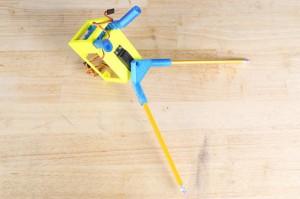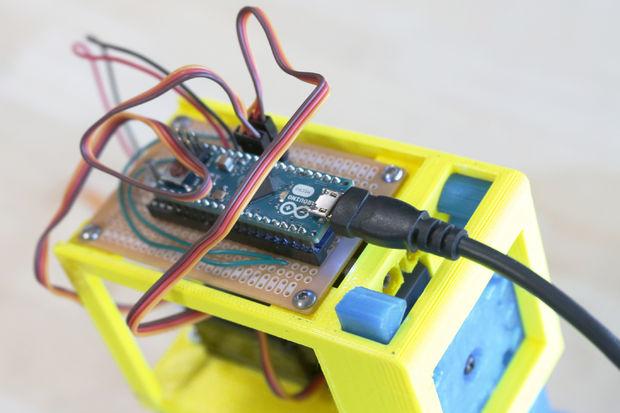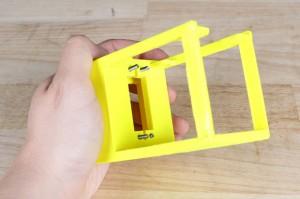 Robots and science fiction fantasy have gone hand in hand throughout the years, with most of our connections to robots coming from a classic movie or TV show. An aspiration of man since ancient times, robots did not become a rudimentary reality until the Industrial Revolution when it became possible to equip machines with small motors. While we may still have a vision of the humanoid robot that communicates with us and performs both menial and major tasks, they have evolved for use in multiple industries for use as precision tools, they are sometimes manipulated by remote control, and artificial intelligence has been in the works since the ’60s.
Robots and science fiction fantasy have gone hand in hand throughout the years, with most of our connections to robots coming from a classic movie or TV show. An aspiration of man since ancient times, robots did not become a rudimentary reality until the Industrial Revolution when it became possible to equip machines with small motors. While we may still have a vision of the humanoid robot that communicates with us and performs both menial and major tasks, they have evolved for use in multiple industries for use as precision tools, they are sometimes manipulated by remote control, and artificial intelligence has been in the works since the ’60s.
 With 3D printing technology, robotics are just an idea and a design away, as the technology presents makers with the ability to create parts on whim. Randy from Instructables created a design demonstrating just how easy it is to 3D print a robotic pal of your own.
With 3D printing technology, robotics are just an idea and a design away, as the technology presents makers with the ability to create parts on whim. Randy from Instructables created a design demonstrating just how easy it is to 3D print a robotic pal of your own.
Randy runs the Instructables Design Studio and has hundreds of Instructable designs under his belt. He is also the author of Simple Bots and 62 Projects to Make with a Dead Computer. Randy has been making robots for a while, but he wanted to try his hand at making one via 3D printing. This walkerbot is quite the charming little guy, lurching along on his pencil legs.
Front assembly
“The nice thing about 3D printing is that it makes building robots easy. You can design whatever configuration of parts that you can dream up and have them in your hand virtually right away,” states Randy. “This allows for rapid prototyping and experimentation. This particular 3D printed robot is an example of that.”
Mulling over the idea for this particular style of robot for a number of years, Randy had not found a way to make his concept a reality until he discovered the limitless capability provided by 3D printing. Within two days he was able to bring his idea to fruition in producing a type of 3D printed robot called a ‘walkerbot’ that could shift its balance forward. He recommends this as a fun weekend project. Hmm…that’s surely a sign of the times when all you need is an elementary knowledge of electronics and soldering to build your own robot in a couple of days!
The complete list of materials is provided here, but Randy basically put it together using his 3D printer, two servos, an Arduino Micro, some pencils, the battery, and a few other items; most of the materials are either household or can be picked up at Radio Sha ck. He points out that you could even sharpen the pencils and transform this guy into a drawing robot.
ck. He points out that you could even sharpen the pencils and transform this guy into a drawing robot.
Going to Randy’s Instructable, you can download and 3D print the files according to your specific printer. He then offers 15 easy steps to build the walkerbot, which consists of making the robot by assembling the servos, programming the Arduino Micro (he supplies the code), building the circuit, putting the other limited amount of pieces together, connecting the battery, and watching the robot go.

Program the Arduino
Have you built anything like this? Tell us about it in the 3D Printed Walkerbot forum at 3DPB.com. You can also check out this video of Randy explaining his walkerbot and demonstrating its movements:
Subscribe to Our Email Newsletter
Stay up-to-date on all the latest news from the 3D printing industry and receive information and offers from third party vendors.
You May Also Like
Open Source Everything: Assist in Everything with 3D Printing
In a previous post in this series, we looked at the opportunities related to open source assistive devices, often small and novel objects that can be 3D printed cheaply. Unique...
Open Source Everything: 3D Print Your Own Assistive Device
Professors Joshua Pearce and Jacob Reeves worked with student Anita So to make an open source walker. It’s a customizable device, whereby the joints are 3D printed on desktop machines...
Open Source 3D Printing: Set up Your Open Hardware Development So Everyone Can Participate
Josef Průša, the founder and CEO of Prusa Research, published an important and thought provoking article titled “The state of open-source in 3D printing in 2023” where he called for...
The State of Open-source 3D Printing: How to Preemptively Quash Patent Parasites and Trolls
Josef Průša, the founder and CEO of Prusa Research, published an important and thought provoking article titled “The state of open-source in 3D printing in 2023” where he called for...
































